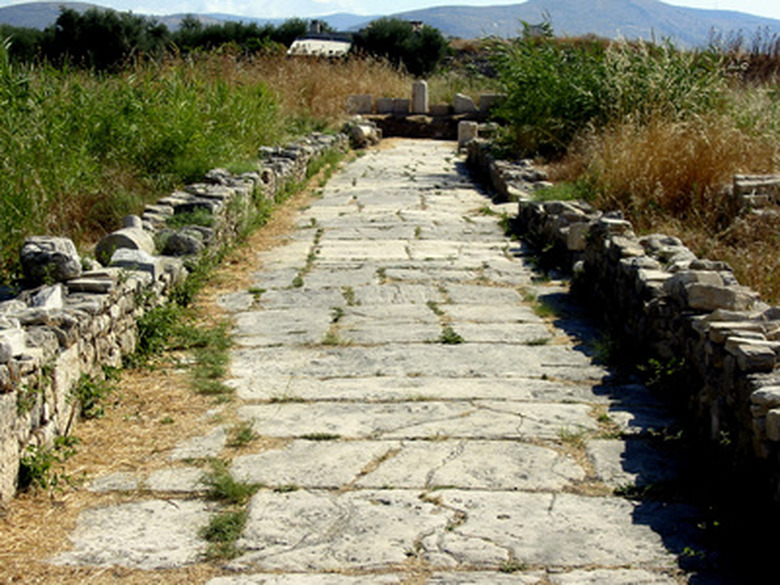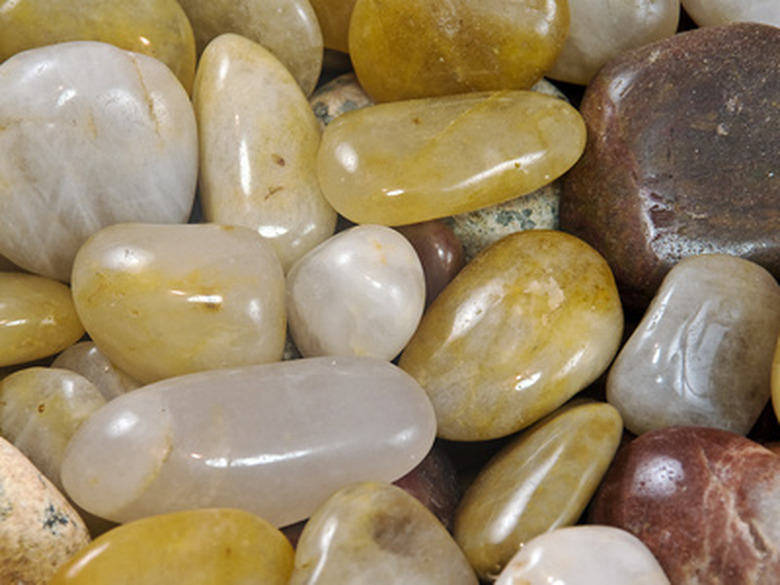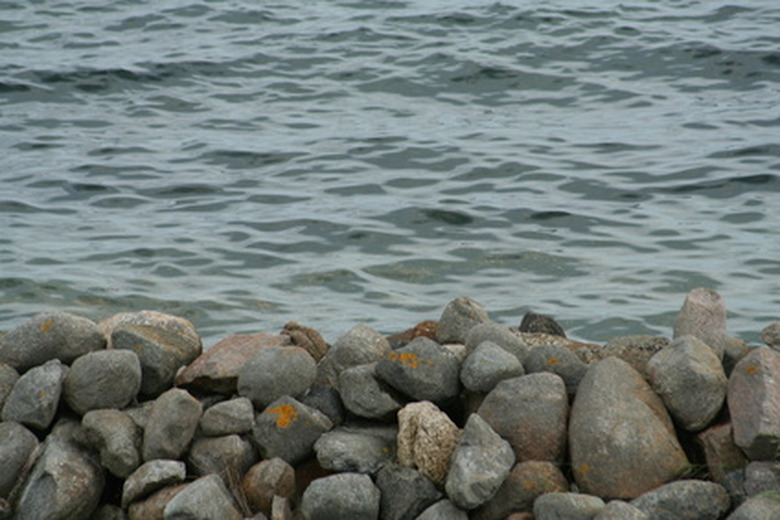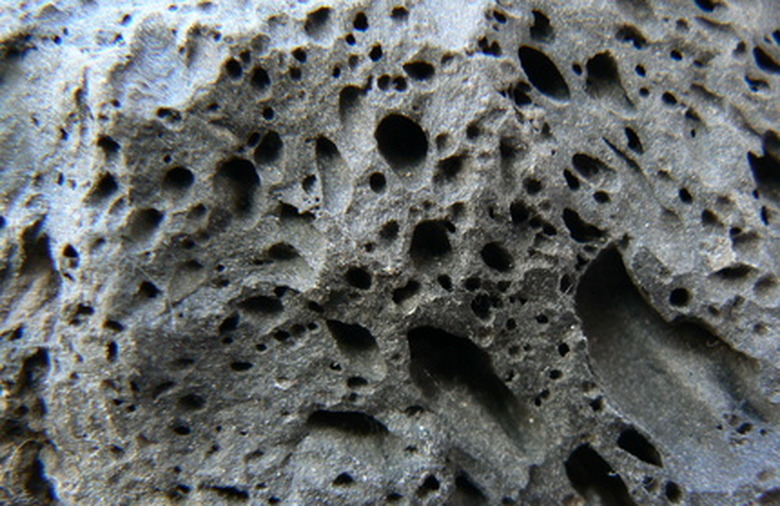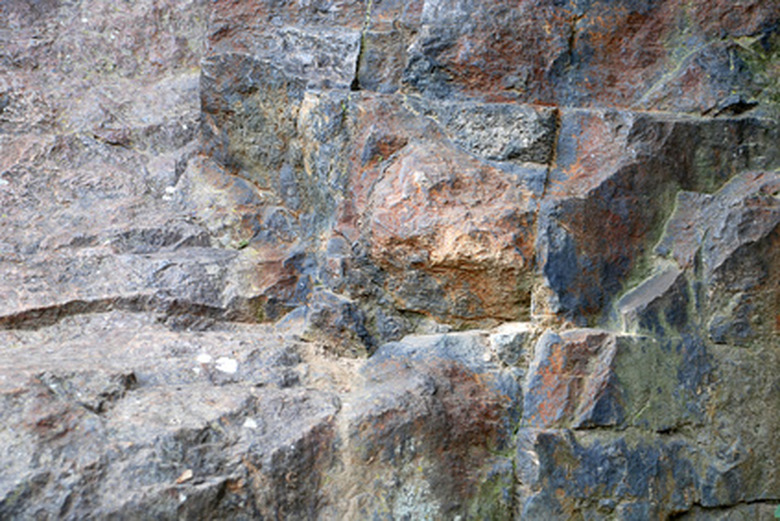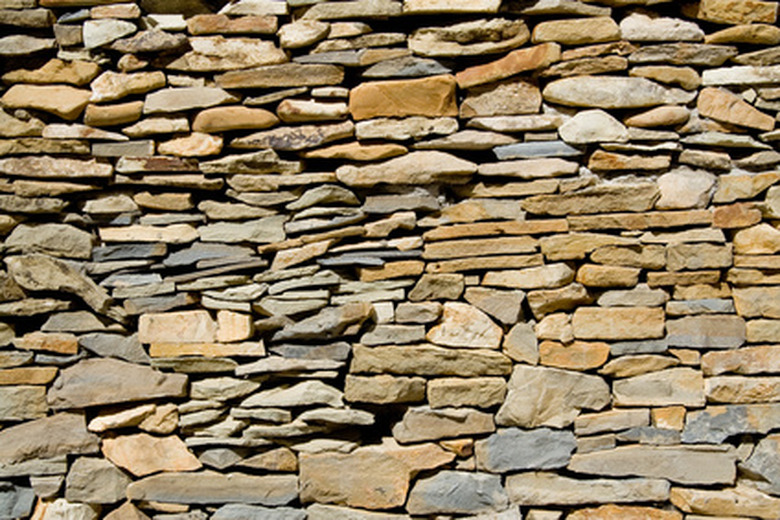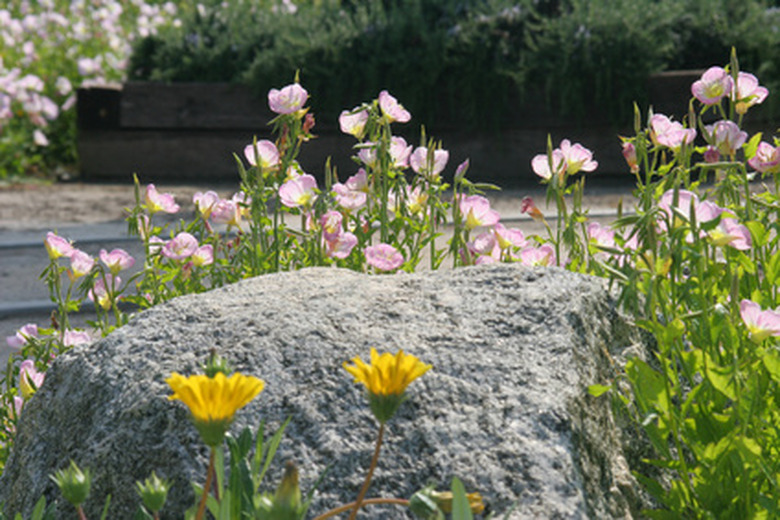Types Of Landscaping Stone
People use many different types of stones in many different ways in the landscape. Stones are used for walkway paths, planting bed borders, decorative accents and patio surfaces. Stones sizes range from miniature pieces to huge boulders. They come in a multitude of colors and shades. Save money on shipping costs and create a more natural setting by using stones that are found in your region. Exercise care when you move large stones on your property, so you don't injure yourself.
Colorado River Flats
Colorado River Flats are relatively flat stones with smooth, rounded edges pulled from the Colorado River. River rocks are those rocks that river water tumbles and polishes to create a smooth and rounded surface. The rocks are typically 3 to 8-inches in diameter and 1 to 3-inches thick. Rock colors are hues of gray, blue and red. Use Colorado River Flats in cobblestone paths, water features and to create dry creek beds.
- People use many different types of stones in many different ways in the landscape.
- River rocks are those rocks that river water tumbles and polishes to create a smooth and rounded surface.
Mexican Beach Pebbles
Mexican beach pebbles are small stones averaging one-half to 3 inches in diameter. Colors range from deep-gray black tones to light gray.The pebbles are also found in a dark red color. When they are dry, Mexican beach pebbles generally have a matte finish.
In the landscape use Mexican beach pebbles in water features where they will add an overall glossy look. They also work well as a monochromatic border around planting beds.
Lava Rocks
Lava rocks are a low-density rock, and because of that they weigh less per rock than most other rocks. Harvested from inactive volcanoes, they have a distinct dimpled appearance. Lava rocks used in landscaping are generally three-quarters to 1.5 inches, and are usually red or black. Use them for pathways and as a border accent.
- Mexican beach pebbles are small stones averaging one-half to 3 inches in diameter.
- Harvested from inactive volcanoes, they have a distinct dimpled appearance.
Decomposed Granite
Natural forces break down granite to reduce the stone to sand or pebble sized material. The range of colors of the decomposed granite mimic the colors of the original piece of granite. Tamp down decomposed granite to use on pathways, decks and patio surfaces. Unsealed, water will pass through rather than pool on the surface. According to the "Residential Landscape Revitalization Workbook," published by the City of Scottsdale, Arizona, "[d]ecomposed granite (DG) covers the soil surface, reducing water evaporation, weed growth and blowing dust." Use it also to create borders with unique shapes. Its high level of trace elements, make DG a useful soil amendment when mixed in with organic materials.
- Natural forces break down granite to reduce the stone to sand or pebble sized material.
Flagstone
Flagstone encompasses a wide range of flat slabs, usually sandstone, limestone or slate. Typically they are only a few inches thick with an irregular outline. Distributors, landscapers or homeowners can cut flagstone into any number of diameters to suit its intended use in the landscape. Flagstone is frequently used for paving walkways, stair treads and patios. Major sources of flagstone are found in places with large deposits of sedimentary rock, such as, Pennsylvania, Texas and Arizona. The color and texture of each individual piece will reflect the specific composition of the stone.
Boulders
Boulders are very large stones that are found in fields or quarried. Boulders come in any number of sizes. Most often they are measured and sold by the ton. The look and coloring of any particular bolder is simply a matter of the type of stone it is. Homeowners use large boulders to make significant impact statements in the landscape and smaller boulders as accent pieces, borders and in water features. The City of Scottsdale, Arizona's pamphlet, "Residential Landscape Revitalization Workbook" instructs: "Bury boulders to a depth one-third of their size for a more natural look."
- Flagstone encompasses a wide range of flat slabs, usually sandstone, limestone or slate.
- Distributors, landscapers or homeowners can cut flagstone into any number of diameters to suit its intended use in the landscape.
